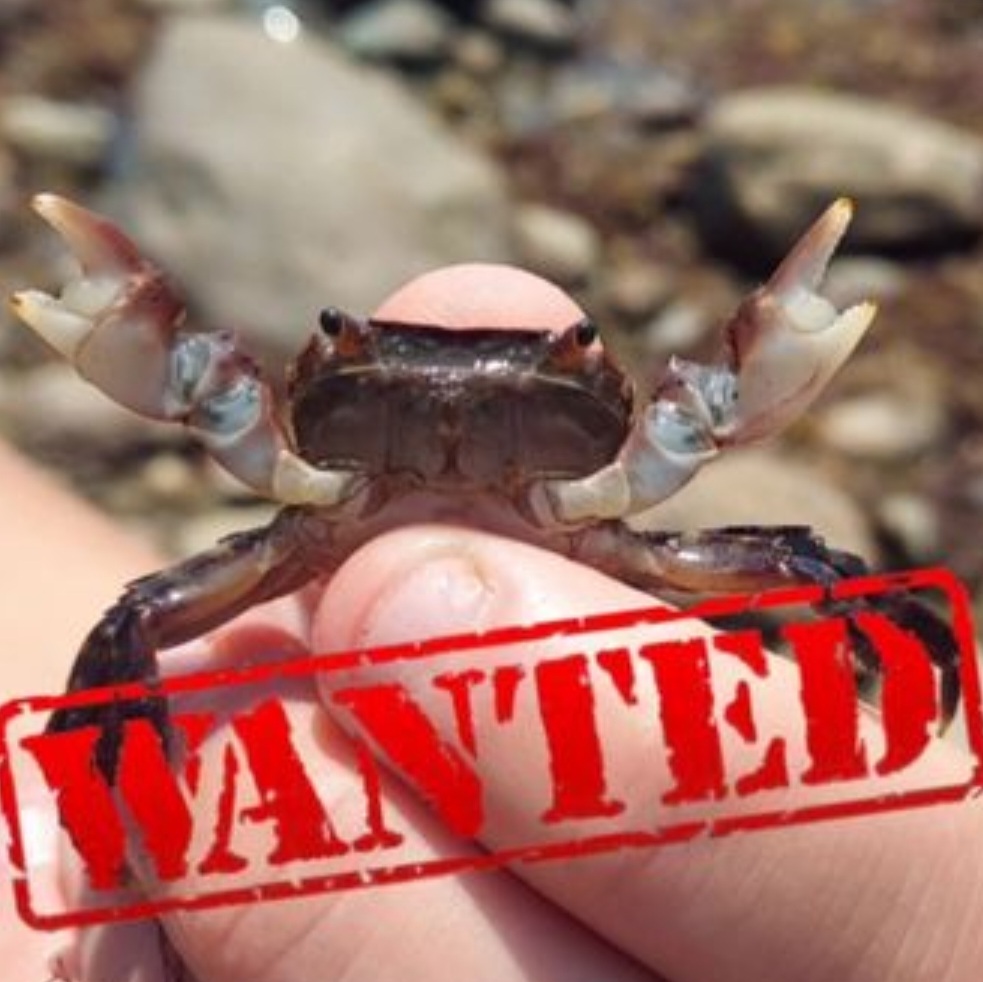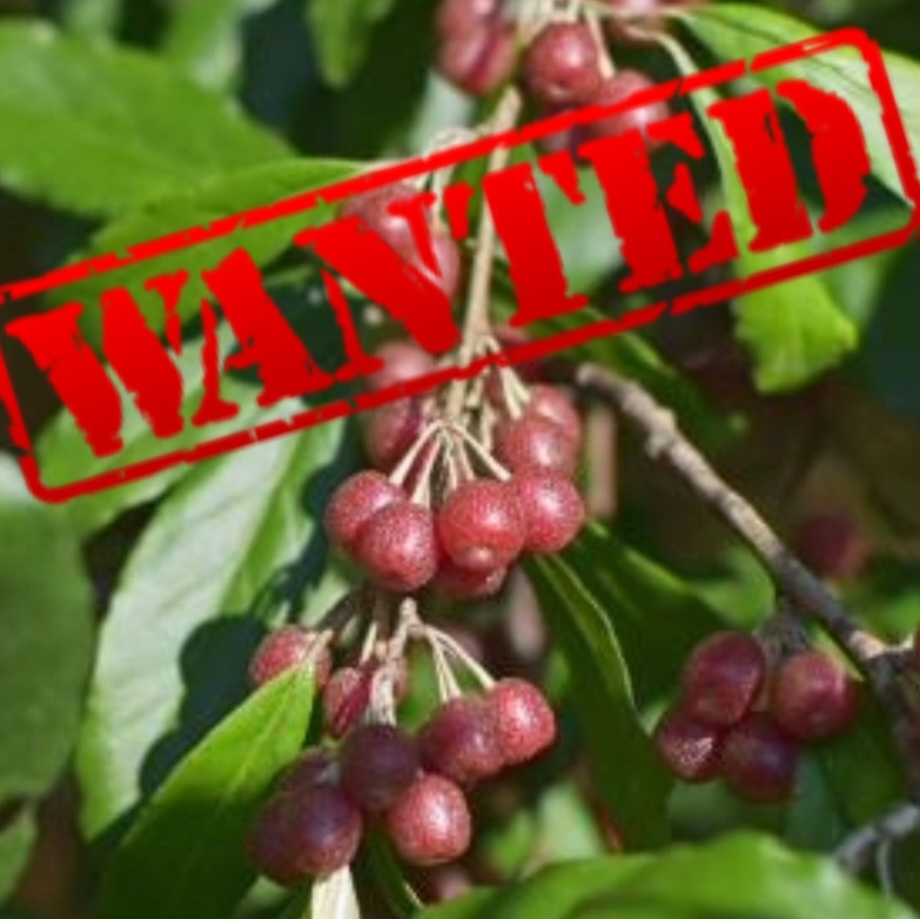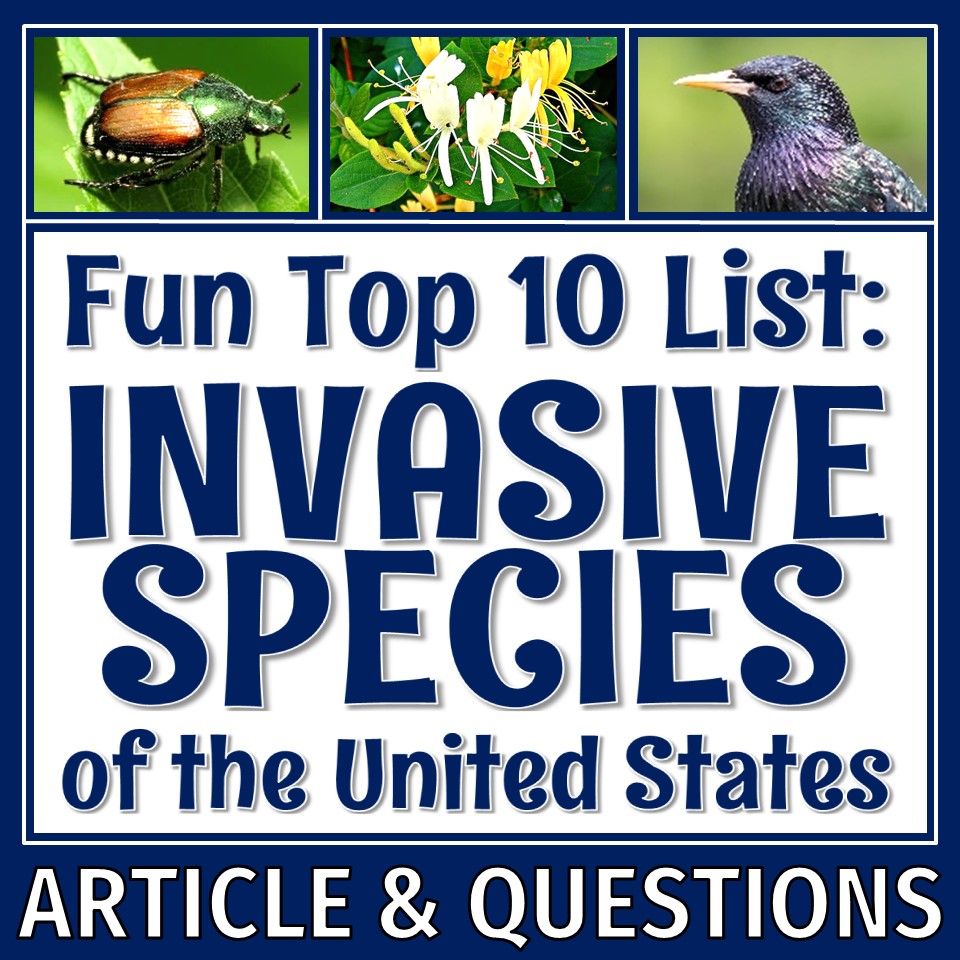
Start your invasive species activity with a hook that catches students’ attention every time.
This idea is silly and simple but never fails to grab kids’ interest!
Whenever I introduce an invasive species lesson, I start with an old-fashioned “wanted” picture of a local invasive species.
Around here, the kids are very familiar with invasive autumn olive berries (many local people eat them… I think they’re gross!) and invasive Asian shore crabs (you can’t pick up a rock at the beach without seeing one).
Most of my students recognize these species but don’t realize they’re harmful. By making something that they are familiar with the “bad guy”, they’re naturally curious to learn more.


This is so easy to do. Simply find an image of an invasive species in your area. (You can use an image from Google because it’s for single classroom use so copyright isn’t a problem.) Next, open the image in PowerPoint or any other program that you can work with pictures in. Then, slap on a transparent “wanted” sign over the image. (You can download the transparent ones I use here: Red Rubber Stamp “Wanted” and Old West Style “Wanted”.)
Once I have the “bad guy” picture made, I put it up on my SmartBoard. So, it’s displayed as the kids walk in for class. They’re asking questions about the lesson before we even begin class! Engagement? Check!
Need help finding an invasive species in your area? If you go to the USDA’s invasive species website and click on your state, you’ll find invasive species lists. (It takes a few clicks but won’t take more than a minute.) You’re sure to find something that looks familiar, unfortunately!
To save some time, you could also pick from the following (extremely non-comprehensive!) list of invasive species in different regions of the United States:
Also… little known fact… you get science teacher bonus points if you can find an invasive species and bring it to class. Bringing in a real-life example works well for two reasons:
First, the obvious. Kids can see the species and say, “OMG I’ve SEEN that!”
Second, removing invasive species from the wild is doing a good deed for the environment. Talking about removing species from the wild is a nice side discussion to have with students. You can highlight that ordinarily, it’s not good to remove nature from where it is… but in the case of an invasive species, it’s a good thing! (In fact, when you are on the USDA’s invasive species website as I mentioned earlier, you’ll see links to many invasive species removal programs.)
If you’re like me and try to sneak in graphing practice when you can, you might like my zebra mussels lesson. Zebra mussels are an extreme example of an invasive species with exponential growth. In this lesson, students get graphing practice when they graph the growth of zebra mussels. They’ll also graph the decline of a native species. Analyzing these graphs is a “lightbulb moment” for many students as they witness the harmful effects of an invasive species. Check out the lesson HERE!

And finally, if you feel like taking it easy for a class period, try this Top 10 Invasive Species Reading! Students read about the top 10 invasive species in the United States, from carp to honeysuckle to starlings. They’ll learn how they got here, their effect on native species and ecosystems, and how they can be controlled. It’s a fun, light reading that the kids will find interesting. Examples of what students will read about in the article include:



If you are teaching a lesson on invasive species, you may also be interested in Science By Sinai’s Invasive Species Dice Roll Game. Students use the provided desert food chains to draw lines connecting interacting organisms on the ecosystem food web. Then they roll a pair of dice to determine which nonnative plant or animal has invaded. Then, they delete the lines connecting the affected organisms on their food webs. The webs look quite different after a few rolls of the dice!
I love this activity because it takes a comprehensive look at how invasive species affect an entire food web and the kids find it super engaging. I also love the deeper-level thinking questions that Science By Sinai provides at the end of the activity. Definitely an activity to do year after year!
If you like these ideas, please follow me on Instagram where I offer science teacher tricks and tips! And you can follow me on Teachers Pay Teachers, too!
© Flying Colors Science 2025 | Terms & Conditions | Privacy Policy | Disclaimer
| Cookie | Duration | Description |
|---|---|---|
| cookielawinfo-checkbox-analytics | 11 months | This cookie is set by GDPR Cookie Consent plugin. The cookie is used to store the user consent for the cookies in the category "Analytics". |
| cookielawinfo-checkbox-functional | 11 months | The cookie is set by GDPR cookie consent to record the user consent for the cookies in the category "Functional". |
| cookielawinfo-checkbox-necessary | 11 months | This cookie is set by GDPR Cookie Consent plugin. The cookies is used to store the user consent for the cookies in the category "Necessary". |
| cookielawinfo-checkbox-others | 11 months | This cookie is set by GDPR Cookie Consent plugin. The cookie is used to store the user consent for the cookies in the category "Other. |
| cookielawinfo-checkbox-performance | 11 months | This cookie is set by GDPR Cookie Consent plugin. The cookie is used to store the user consent for the cookies in the category "Performance". |
| viewed_cookie_policy | 11 months | The cookie is set by the GDPR Cookie Consent plugin and is used to store whether or not user has consented to the use of cookies. It does not store any personal data. |